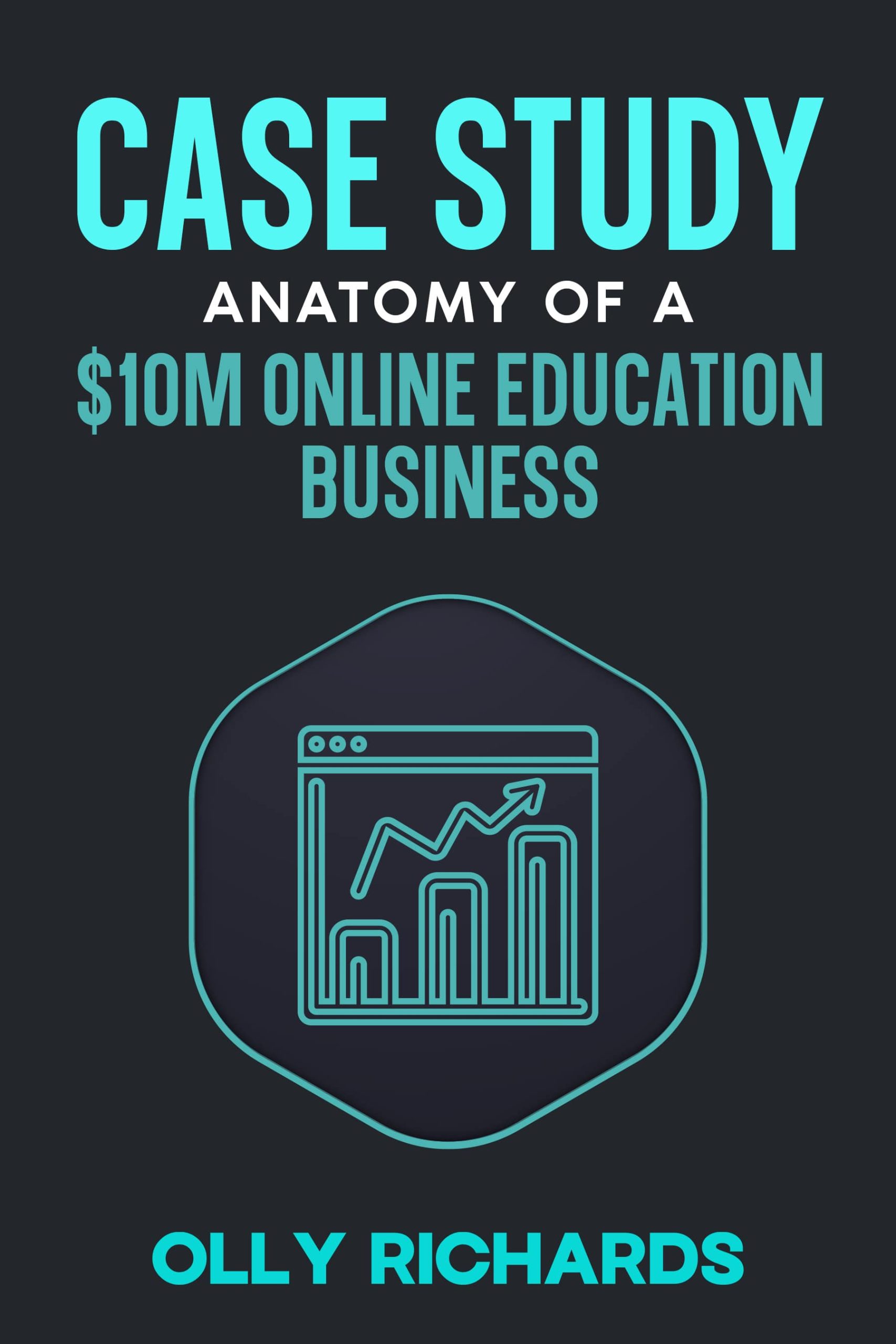From: Olly Richards
10th March 2023
Hobbitshire (Probably about to get rained on)
I built a $10m company by writing words on a screen.
One word at a time.
Week after week.
And while writing isn’t all I did…
I sure as heck couldn’t have done it without them words on them screens.
Learning to write is, hands down, the most important skill for any new entrepreneur.
To learn to write, is to learn to think.
Learn to write, and you’ll always put food on the table.
Learn to write well, and you’ll put other things on the table too. Like Kopke Colheita 1981 Porto...


(Christmas chez Olly is fun!)
Anyway, today I’m going to detail the exact process I use to write my newsletter:
- Where my ideas come from
- How (and where) I plan, write and edit
- What I delegate (and why)
I’ll use the newsletter as my example, but I write blog posts, sales letters and emails using the exact same process.
TBH, I never thought Olly’s writing process would be interesting to anyone.
But funnily enough…
The one chapter of my case study that everyone seems to email me about, is the one chapter I almost didn’t write: Thoughts on lifestyle (Chapter 10).
So, I guess this is me writing about the things that I find interesting…
In the hope that you will too!
The 3 Stages of Writing
I think of my writing in three stages:
- Ideation
- Writing
- Editing
All three stages are equally important, and one can’t exist without the other.
Here’s what I mean:
Amateur writers will try to do everything at once – sit down at their desk, have the good ideas, write, and edit all at the same time.
But, for me, these things must happen in separate stages, because I see them as separate processes that use different parts of the brain.
- Ideas - come to me in the shower, when I’m walking, and in conversation
- Writing - is the process of hammering out words (often long and tedious), whatever the weather, whatever your mood, and however many negronis you had the night before
- Editing - is where the art is created
Can you see why these are different processes?
And how you need a different part of the brain for each?
That’s why they are best done separately.
Breaking writing down into stages helps you to maximize your energy, write better and stay consistent.
Stage 1 - Ideation
If you write regularly, you should know what you’re going to write about before you sit down at your desk.
The way to do this is by capturing ideas before you need them.
I have a folder on the Notion app on my phone.
Every time an idea comes to me, I religiously capture the idea in this folder.
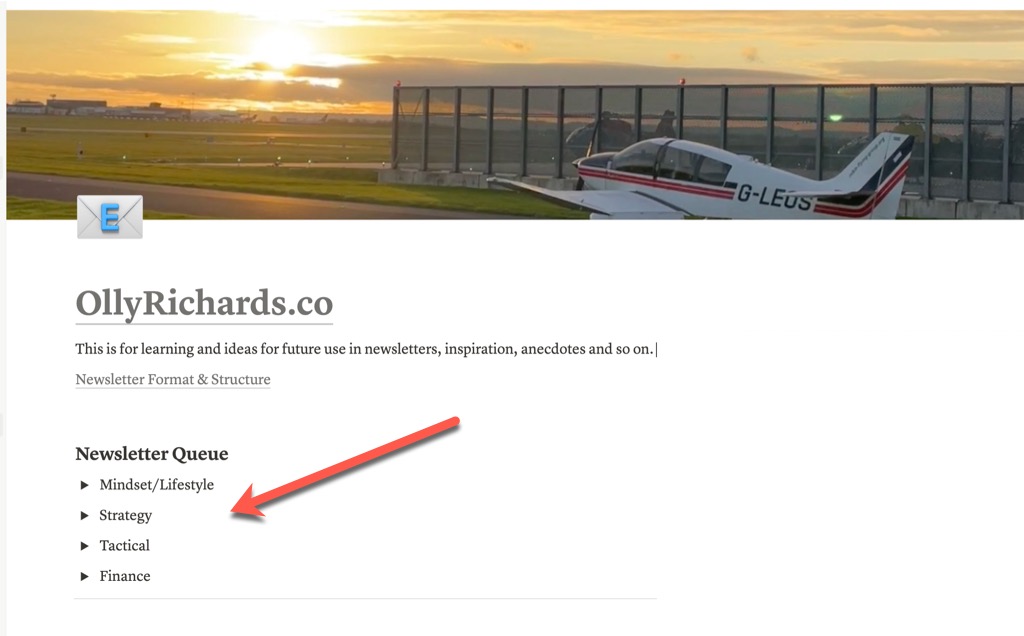
I have four categories of things I want to write about in my newsletter:
- Strategy
- Tactics
- Mindset
- Finance
Each idea I get goes in the relevant folder.
Every time you have an idea, you need to get into the habit of stopping whatever you’re doing and writing it down.
Only yesterday, I was flying my Robin DR400 over the skies of Hobbitshire, and had two fantastic ideas come to me while climbing above the clouds at 4,000 feet.
I immediately levelled out, brought the power back, trimmed it off, and whipped out my phone to get those ideas down in Notion.
That’s what I’m talking about!
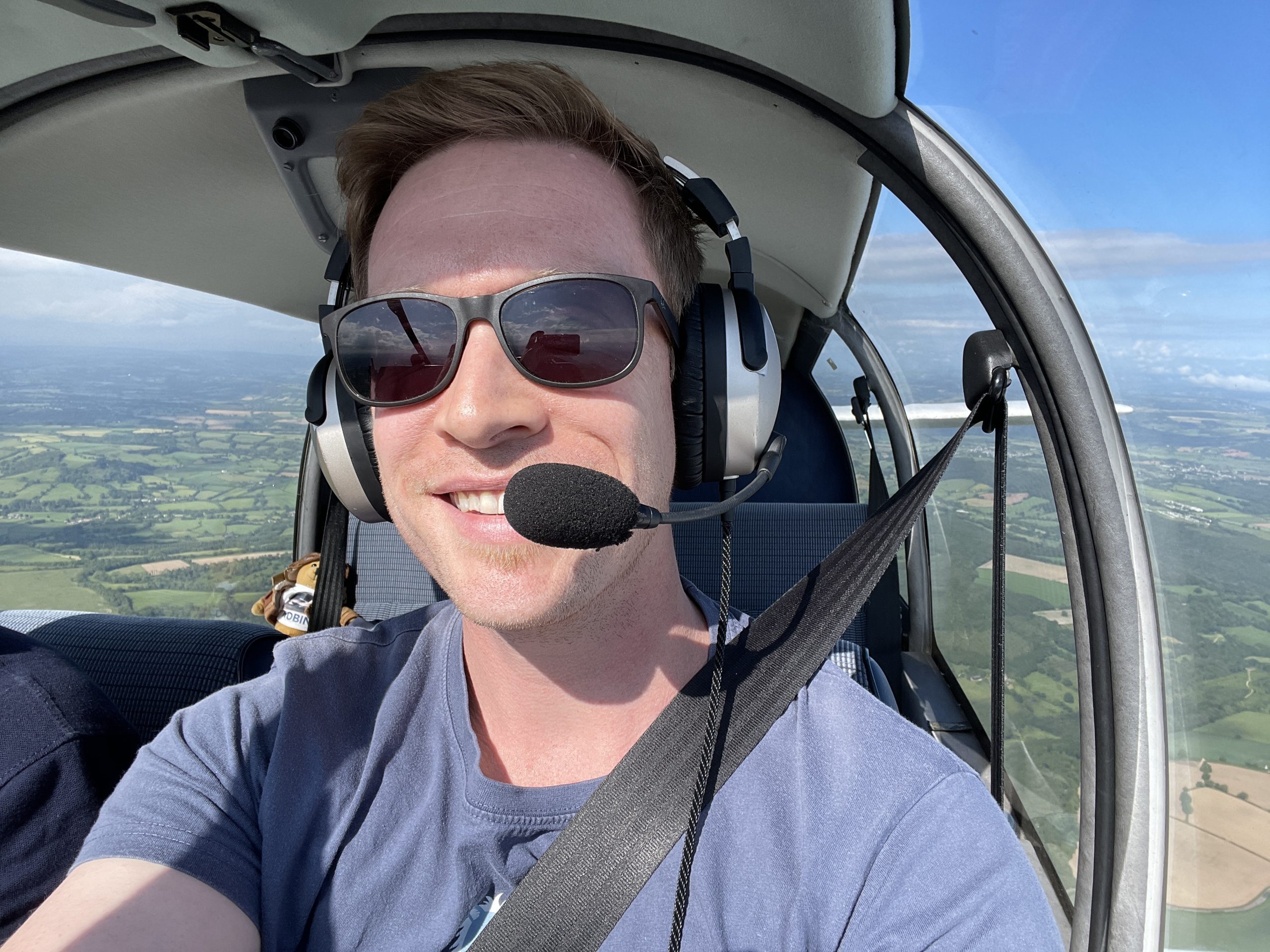
(Cringe selfie? I know. Don’t judge.)
When I sit down to write, I simply pick an idea from the list, switching up the categories each week for variety.
That’s it.
Stage 2 - Writing
Professional writers will tell you that writer’s block is a myth.
Why?
Because their it’s their job to write. Not to daydream.
Their job is to sit down at their desk at 9am every day and write for 4-8 hours.
Don’t feel like it? Tough.
No inspiration? They get on with it anyway.
It’s just what they do.
(Read Murakami’s latest book, Novelist As A Vocation, to understand what true discipline looks like!)
The reason they can do this:
Professional writers know that the first draft doesn’t have to be genius. They will redraft their work multiple times, making sweeping changes each time. So there’s no point trying to get it perfect first time.
What matters is getting the ideas down, so you can finesse them later.
Here’s my process:
Step 1 - Mindmap
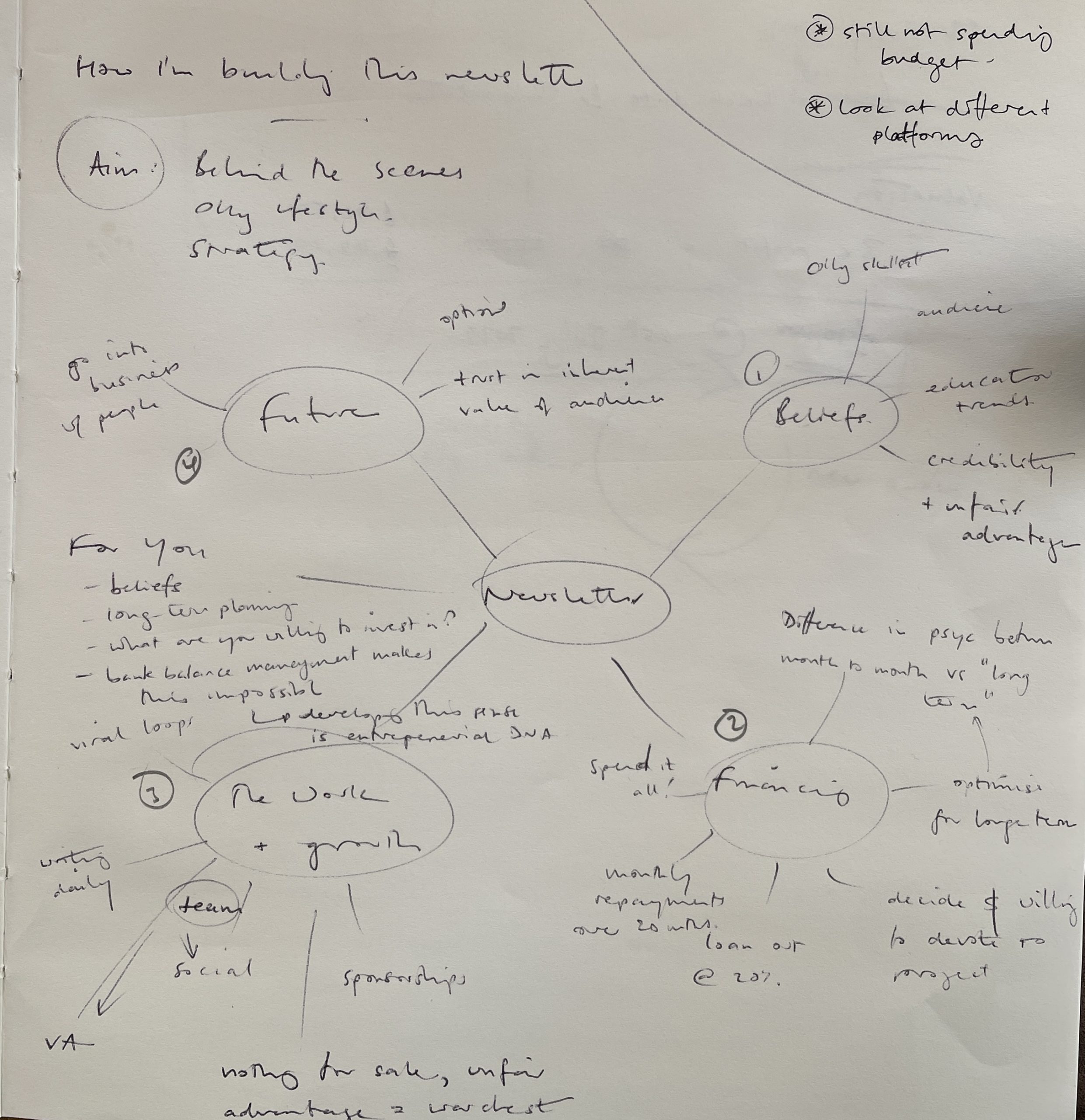
Once I’ve decided on the topic, I grab my large leather Japanese notebook and create a mind map of all my ideas on the topic.
Everything - one big brain dump.
Once done, I’ll ruthlessly cut out everything that isn’t strictly relevant to the thrust of the article.
(This is vital. Your writing will lack clarity if you’re not ruthless about what should make the cut.)
Finally, I’ll decide what order everything should go in, so as to create a coherent piece that flows.
All this takes about 10-15 minutes.
Step 2 - Writing
What I have by this point is:
- The contents
- The structure
This makes the actual writing far easier.
So then, I sit down and I write.
This is the grunt work.
It’s not even all that creative. (Remember the artistry comes in the editing.)
My process is to write from 9am to 12pm every day, Monday to Friday. I write straight, without much of a break.
For me, these are the best hours of the day. I’m awake and alert. This means I won’t get distracted. I will actually do the work.
Sometimes, I’ll write at home.
Other times, I’ll drive down to the beach and write in my usual café.
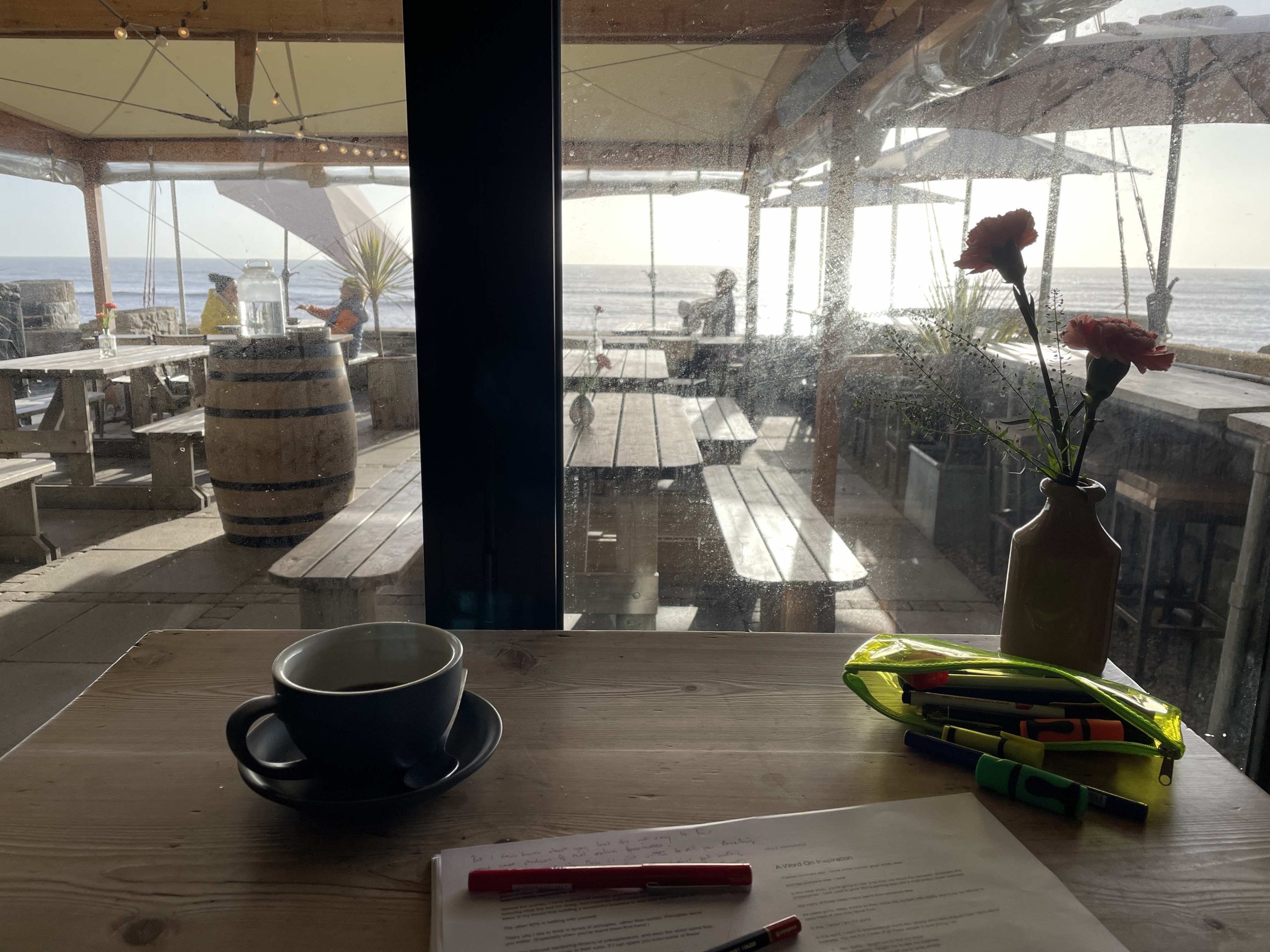
What’s key for me is that I devote those three hours every day to writing.
I thought about other ways of working…
But here’s what I know:
Growing my newsletter to 100,000s of subscribers will only come from consistent writing for a period of many years.
It’s incredibly hard to be this consistent.
Many people far smarter (and significantly better-looking) than me will fail at this simply because they can’t be consistent.
I can.
But I need to make it stupid simple.
And for me, that means:
“I write for the first three hours of every day.”
Simple as.
With this level of output, I can produce 2-3 newsletters a week. Since I only publish once a week, this means I’m always getting ahead of my publishing schedule. Ideally, I’d like to be 2-3 months ahead.
When you work in this way, it actually creates a lot of freedom, because you can always take time off, without worrying about falling behind.
(Over at Story Learning, we have a similar buffer across all our media properties - blog, YouTube, podcast. Always weeks, if not months, ahead.)
Discipline in the small things creates freedom in the big things.
When I write, all I’m doing is translating the ideas from my mind map onto the page, following the structure I decided on.
I write using the IA Writer app on my Mac. I like the clean interface. I try not to edit as I go. Rather, I just get the ideas out. I write in short sentences. Like the ones you’re reading now. Easy to follow, aren’t they?
Here’s what my screen looks like as I’m writing:
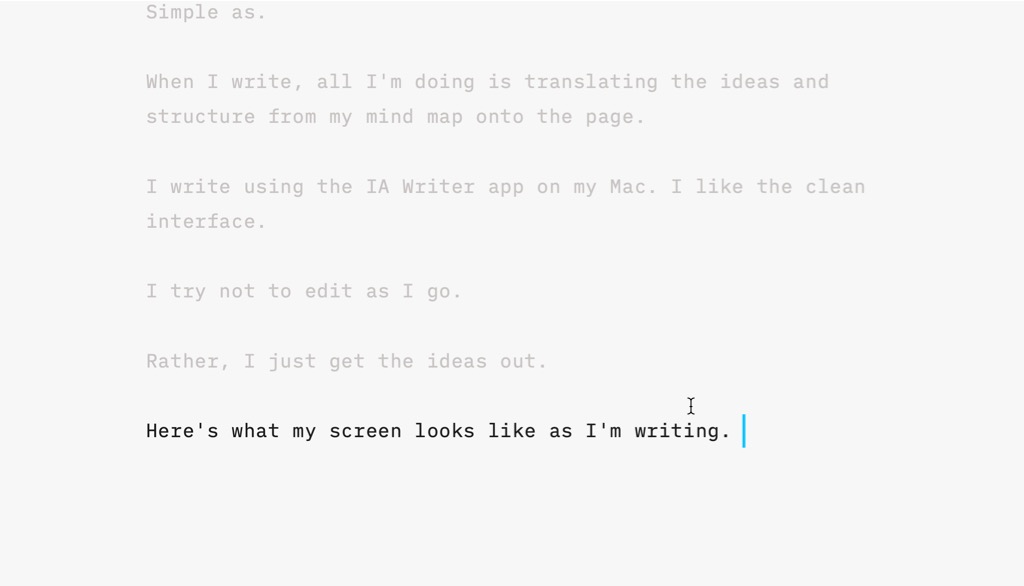
My aim is to finish writing the entire piece by 12pm, but I’m not strict. (It’s the ritual that matters.)
But I do try to aim for “completion”, so that I can sit down fresh the next day and either work on a new piece, or else start the editing process clean.
For example, it’s a Friday morning as I write this.
My job this morning is to edit three newsletters I’ve already written. No new writing, just editing.
Side note: One thing I must do while writing is lock my phone in a drawer. The invisible distraction factor is so huge that it literally sucks my productivity in half. You know what I’m talking about. Try this hack!
Then…
Once I’m finished writing, I walk away.
I don’t start editing on the same day.
I close my laptop, walk away, and go for lunch.
Step 3 - Editing
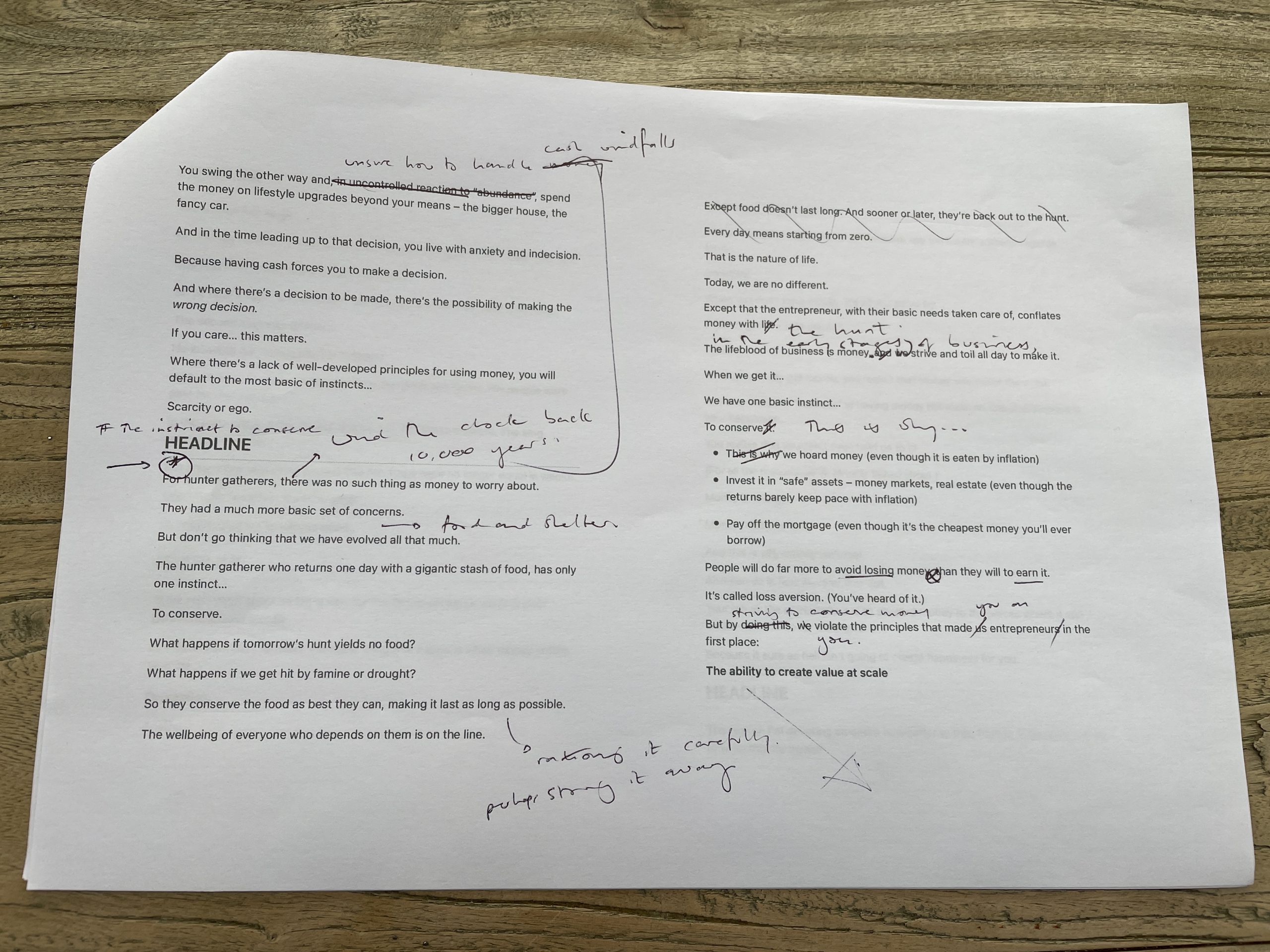
Next day (or sometimes a few days later), I’ll come back to the writing.
This time, to edit.
Here’s what I do:
- I print out the piece and read it through on paper
- I mark it up and edit with a red pen
- I go back to laptop to type up the changes
Why do this on paper?
I find it 100x more effective to read and edit on paper vs screen.
This might just be me - I don’t like reading on screens at the best of times.
But pen & paper is tactile and physical. I find it leads to better, more creative work.
It’s also easier to look at the piece structurally. I’ll often move around entire sections during the editing phase, and this is much easier to do on paper.
I literally draw big circles and arrows to show the changes I want to make.
I also tend to remove a bunch of adjectives, and generally cut words and sentences that just don’t belong.
Other things I do in the editing phase:
- Decide on the final title of the piece
- Write the sub-headings
I also have an editing checklist that I go through before signing off each piece.
Here’s what’s on my checklist currently:
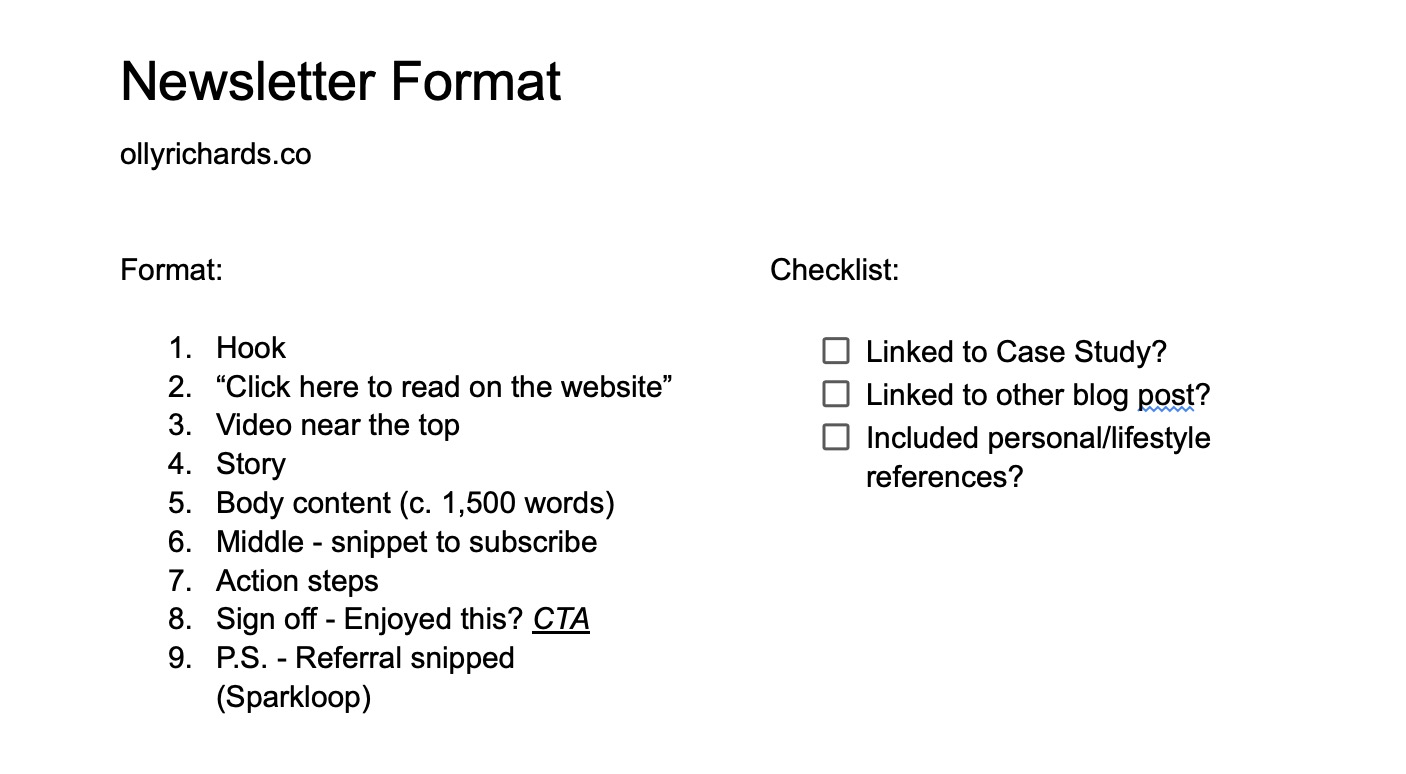
Checklists are important because they:
- Keep your material consistent
- Reduce errors and omissions
- Reduce decision fatigue
Lastly, once I’ve finished the editing process, I’ll immediately sit down at the computer and update the raw document with my changes.
Batching Images and Videos
You might have noticed that I include images, and even full length videos in my newsletters. I feel that these really add to the experience, and give a lot more value.
But obviously they take time.
Having already written the newsletter, I know the content well by this point.
So, although there is creativity involved in the images and videos, it doesn’t take a lot of brain power to make them.
So what I tend to do is batch these.
Once I have two or three newsletters written, I will spend a morning creating all the images and recording all the videos I need for publishing those pieces.
Once done, I will upload the finished images and videos to a folder, ready for the next stage of the process.
At this point, I’m done.
The rest of the process is handed off…
Preparing Newsletters and Blog Posts
Everything up to this point is work that only I can do.
I think of it as “creative output”, and this cannot be outsourced.
It’s the very definition of doing the work.
But there are parts of the editing and production process that do not require my creative input:
- Preparing the email newsletter
- Working up the blog post
These processes are important. After all, they are the finished product that you will see.
But these processes can be done by somebody else. Someone with an eye for detail and the ability to follow a checklist.
More:
If I spend my time inside WordPress and Convert Kit, it takes away from the time I could be writing more newsletters, or growing the newsletter itself.
The art of delegation is conserving your energy for the most important tasks.
And so the final product that you read on the newsletter and blog is created by my fantastic assistant, using extensive SOPs and checklists that we have created and worked on together.
This keeps my energy free to focus on writing.
How to Create a Consistent Writing and Publishing Schedule
Here’s a summary of the process I’ve described in this newsletter:
- 9am to 12pm – daily writing (non-negotiable)
- Edit first draft on paper (not on the same day)
- Batch images and videos (non-creative work)
- Always get ahead of your publishing schedule each week
- Delegate all “non-Olly” work to assistant
I know this might sound like a lot, or even overkill.
But after 10 years of creating content, I’ve found that you buy your freedom through consistency.
When you are 2-3 months ahead of your production schedule, you really do have freedom to spend your time as you want. I also find that there is a real beauty to the daily work (Read Stephen Pressfield on this).
Ultimately, I love writing.
That’s what gives me the confidence to commit to writing this newsletter every week.
It’s how I express myself best.
And I feel fortunate to be writing this newsletter, teaching what I know, and having the time of my life!
If you have a friend who writes online, please forward this email to them.
And if you’re new here, go ahead and sign up to the newsletter so you can see it in action!
Is your writing schedule different to mine? I’d love to hear about it. Let me know on Twitter.
Until next time, happy writing!
Namaste,
Olly
CASE STUDY: Blueprint Of A $10m Online Education Business:
Join my free newsletter for online educators and I'll send you the case study immediately...
We will protect your data in accordance with our data policy!
